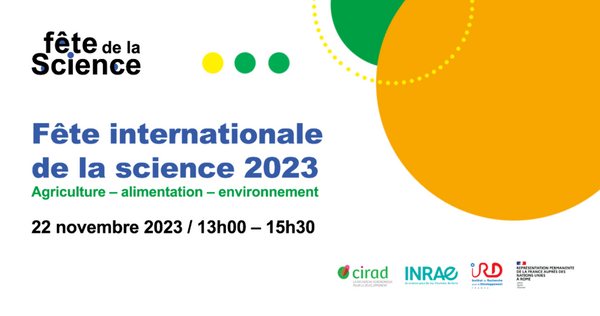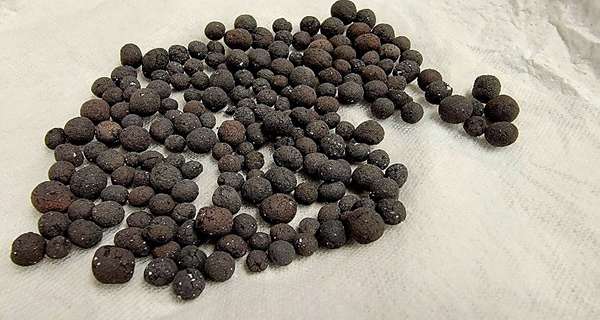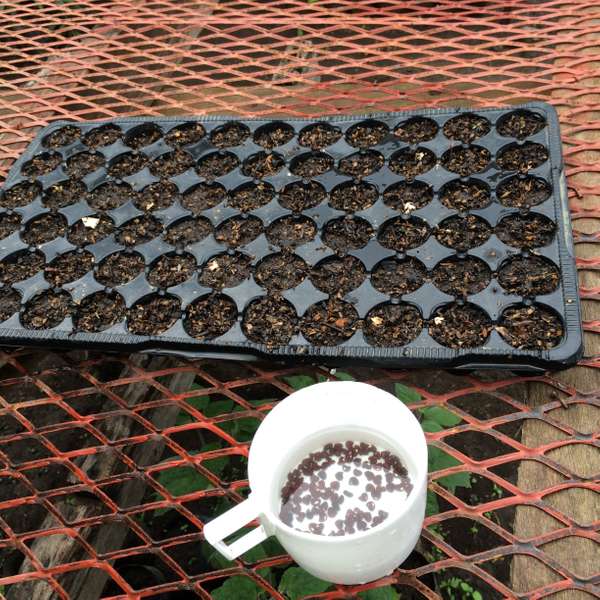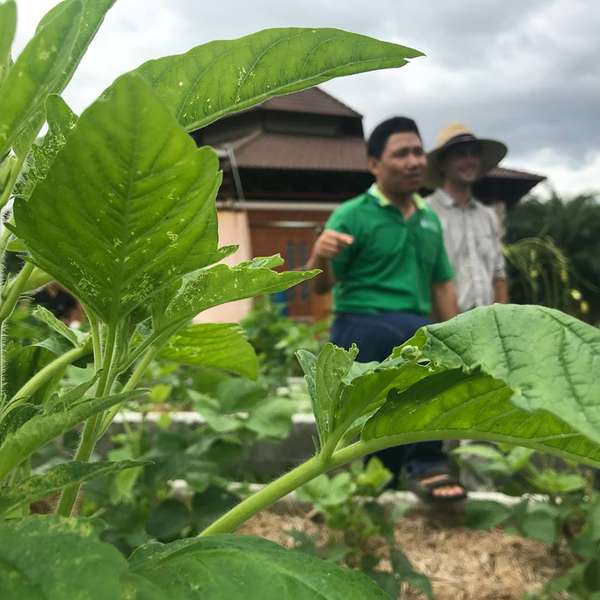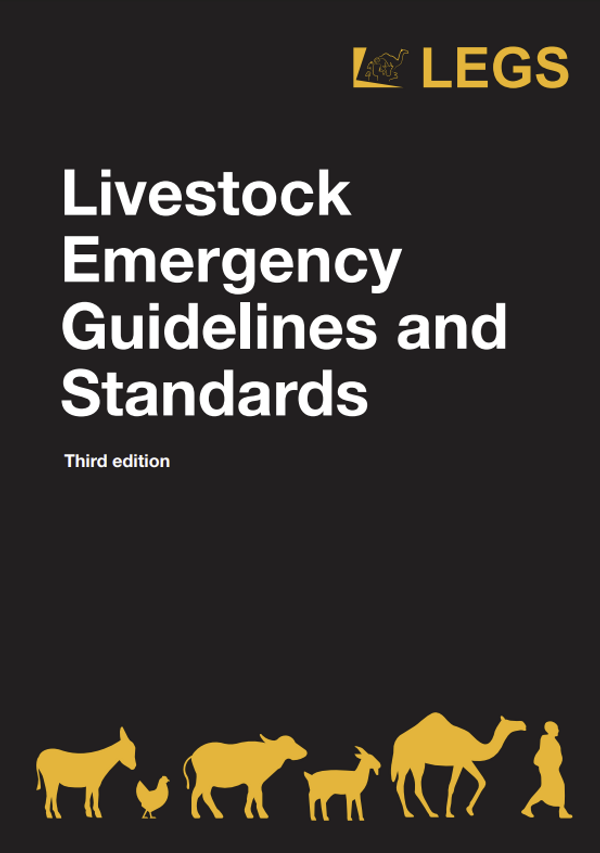Mises à jour de ECHOcommunity
Now Available! ECHO Asia 2024-2025 Seed Catalog 2023-11-28
ECHO Asia's Seed Bank recently released the 2024-2025 seed catalog. This new and improved catalog has a unique format to help you, our network member, better understand each seed and crop better. The catalog is grouped colorfully by category (fruits, grains, herbs & integrated pest management, leguminous trees, oil seeds, pulses & green manure cover crops, vegetables, and seed bundles). Each seed description includes a photo, elevation information, and other helpful details such as if the crop can be used for fodder or has some level of toxicity. If you are looking for a particular species or variety, the index at the back of the catalog can help you find what you are looking! Plants are indexed by Latin name, English common name, and Thai common name.
Download the catalog (PDF) Browse the ECHO Asia seed store online
ECHO is looking for a Director to lead our East Africa Regional Impact Center, located in Arusha, Tanzania 2023-11-21
After many years of service, our Director of the ECHO East Africa Regional Impact Center is retiring and we are seeking a successor director to lead our dynamic East Africa Regional Impact Center team to continue to impact the region via the ECHO network. Since 2012, ECHO’s East Africa Impact Center has been serving our network across the region. The second of four RICs around the world, they have proven the adaptability and robustness of the RIC model to contextualize ECHO’s services to the unique needs and ecological/cultural contexts of those we serve. The first ECHO East Africa Director is now planning to retire in late 2024. This will allow the right candidate time to overlap with this passionate and highly effective individual.
The new director will expand and strengthen the capacity of the diverse regional network to defeat hunger and improve lives through sustainable food and agricultural strategies in East Africa. The director is responsible for building upon the current regional network and serving that network with joy by identifying, validating, sharing, and measuring the efficacy of contextualized agricultural strategies (4 core functions of ECHO) with technical excellence. In short, network building, team building, and training experience will be essential qualities of an effective director.
This position encompasses roles and responsibilities that are critical to the continued relevance of ECHO in the coming years to defeat hunger and bring restoration to people and the planet. Please help us share this opportunity with your network as we trust God to provide the perfect person for this time in ECHO's history.
Invitation au Réseau ECHO : 3e édition de la Fête internationale de la science -“Science(s) & Agenda 2030, et au-delà” 2023-11-13
Le Cirad, INRAE, l’IRD et la Représentation permanente de la France auprès des Nations unies à Rome coorganisent la 3ème édition de la « Fête internationale de la science : agriculture, alimentation, environnement » le 22 novembre de 13 h 00 à 15 h 30 (heure de Rome), en ligne.
Tous les membres du ECHOcommunity sont invités à participer à cet événement.
Un grand merci et n’oubliez pas de vous inscrire
Trees with Edible Leaves - Now available in Spanish and French! 2023-11-07
The Perennial Agriculture Institute has published a new resource by Eric Toensmeir (2022) entitled Trees with Edible Leaves. This free, downloadable book includes over 100 cultivated species of perennial plants. Tonesmeier first introduces the value, geographic distribution, and versatility of perennial plants with edible portions. He includes summary information about common nutrients and the abundance of nutrients found in cultivated perennial plants. Appendix A contains detailed nutritional information.
Publishers have now released editions in Spanish and French and ask to be contacted if additional translations are desired. Tonesmeier’s Trees with Edible Leaves is available free online and through ECHOcommunity.org and the mobile app.
Download Árboles con hoja comestibles
Download Arbres à feuilles comestibles
From the Farm: Moringa for Seed Production 2023-10-31
Over the years, ECHO's seed bank in Florida has sourced Moringa oleifera seeds from both local and international sources. In 2009, a local church graciously allowed ECHO to plant a specific variety of M. oleifera on their property and later manage and harvest the seeds. That experience raised our awareness of local production's value in providing seeds to our network in light of the difficulty in sourcing seeds internationally. In 2021, we decided to produce M. oleifera seeds on our Global Farm in Fort Myers, Florida. This entailed a decision to prioritize seed production over that of trialing and demonstrating multiple varieties. An isolation distance of at least 500 m between M. oleifera varieties is recommended to prevent cross-pollination by bees. To offer and maintain genetic purity of a single variety, instead of seeds with a genetic mix of multiple varieties, we decided to grow just one variety on the farm for seed. Before doing this, we conducted a few trials to identify a variety with good production of mild-tasting leaves within easy reach from the ground. This meant we needed a variety with good branching characteristics leading to outward instead of just upward growth. We identified a variety, PKM-1 from Ghana, that fits those parameters. We removed all the other varieties from the farm and currently have 23 PKM-1 trees planted. As these trees yield seeds, we will plant more trees on the farm and offer seeds to our network. We look forward to serving our network with this variety!
Research Update: Clay Beads for Drying and Preserving Seeds 2023-10-17
At ECHO in Florida, staff have been working to develop a method for small-scale farmers and community seed banks to make their own desiccant to dry and preserve seeds. The three main requirements are clay, wood ash, and a way to heat the beads. Wood ash is a common byproduct of wood-burning cookstoves, and clay can be obtained from clay soil found in many parts of the world. Heating can be done with a forge used by local blacksmiths.
Keeping some desiccant with the seeds, in their storage containers, will help keep seeds dry.The clay beads ECHO has been working with can easily be added to clay pots, tin cans, and glass or plastic bottles. Some closed containers are not perfectly sealed. Even glass jars are not completely airtight if the lids do not seal well. In such cases, keeping some desiccant with the seeds, in their storage containers, will help keep seeds dry. If using well-sealed containers, a farmer could 1) use the desiccant to dry seeds initially and then remove it or 2) keep the desiccant with the seeds if she/he will need to open the container from time to time to access the seeds.
Read More Watch the video online
EDN Numéro 161 Maintenant disponible 2023-10-03
Sommaire:
- Facteurs qui influent sur la germination des semences
- Échos de notre réseau: Considérations sur l’espacement du Moringa
- De la Banque de semences de ECHO: des billes d’argile pour sécher et conserver les semences
- Livres, Sites Web, et Autres Ressources: Aprovecho.org - Informations sur les foyers économes en combustible
Facteurs qui influent sur la germination des semences
le personnel de ECHO et les membres du réseau
Extrait:
Une autre cause importante de germination des semences ou de mauvaise germination des semis comprend le semis de graines trop profondes ou trop peu profondes. Si les graines sont semées trop profondément, la graine peut ne pas contenir assez d’énergie pour pousser la pousse hors du sol avant qu’elle n’épuise ses réserves de nourriture (endosperme). Si les graines sont semées trop peu profondément, les racines peuvent ne pas être ancrées assez profondément ou les graines peuvent se dessécher facilement. En règle générale, vous devez semer les graines à une profondeur de trois à quatre fois la largeur de la graine (Gilroy, 1986). Les petites graines ont besoin de peu ou pas de couverture de sol, mais sont extrêmement vulnérables au dessèchement, alors assurez-vous d’arroser fréquemment pendant les premières semaines de la vie de ces graines. Les graines plus grosses ont une plus grande quantité d’énergie pour pousser la première pousse (plumule) du sol et dans l’air au-dessus du sol. L’orientation de la graine semée n’est pas vitale car les graines sentent naturellement la gravité et enverront les pousses vers le haut et les racines vers le bas.
CED Webinar on Agriculture Training and Savings Groups Now Available! 2023-09-19
Robert Morikawa from Plant with a Purpose shared research conducted by Hope International and Plant with a Purpose in Burundi for the first-ever Agriculture Community of Practice. The community of practice around agricultural development will continue to meet and share important information with each other. This space is meant to focus on the assets and needs of smallholder farmers.
Watch the Webinar Learn more about the Community of Practice
ECHO International Agriculture Conference - Speaker Highlight: Philip Deal 2023-09-12
Philip Deal, Ph.D.
International Director of Programs, Water4
November 7-9 | Fort Myers, Florida Register Today!
Philip has worked in the rural water sector for 10 years, supporting projects across sub-Saharan Africa. In 2015, Philip began partnering with Water4 through the University of Oklahoma to assess their service delivery model in Ghana. Over the next several years, he was able to track their progress and evaluate the success of what has become a key enterprise partner – the first to attain district-wide coverage. His passion is to see rural water service mature in professionalism and sustainability, and see consistent health benefits for the people served. Philip holds a PhD in Civil Engineering from the University of Oklahoma.
Livestock Emergency Guidelines and Standards (LEGS) Handbook and Webinar 2023-09-05
The Livestock Emergency Guidelines and Standards recently released the third edition of the handbook. You can view the handbook, download a PDF copy, or purchase a copy from their website below. This edition includes case studies of applications of guidelines as well as step-by-step guidance on how to use the LEGS tools to develop an emergency response plan. The first three chapters focus on general principles and decision-making:
- Chapter 1 introduces LEGS and provides an overview of emergencies, livestock and livelihoods.
- Chapter 2 presents the eight LEGS Principles that underpin all LEGS-based interventions
- Chapter 3 provides step-by-step guidance and tools for emergency response planning
The remaining chapters focus on the six LEGS technical intervention areas: feed, water, veterinary support, shelter, livestock offtake, and the provision of livestock.
Watch the Global Launch Webinar for LEGS Handbook: 3rd Edition
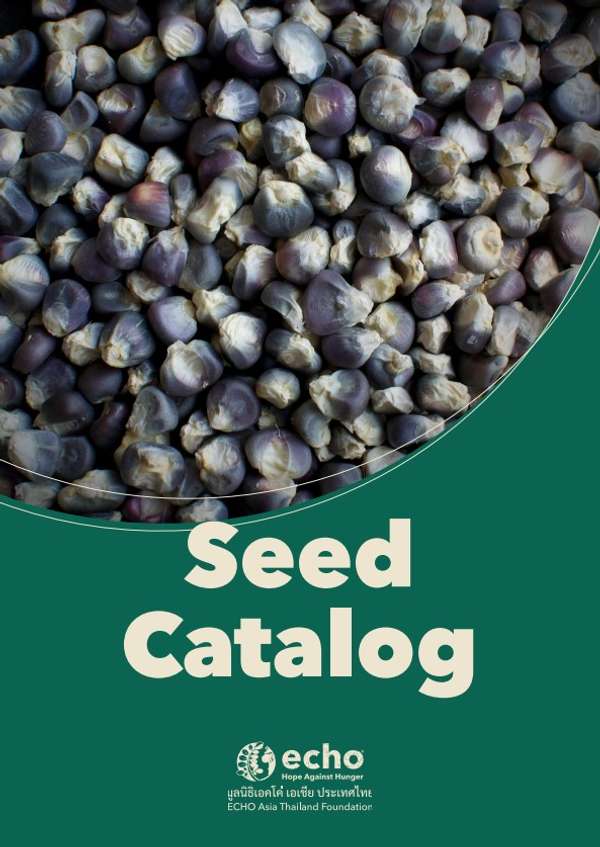
.jpg?w=600)
